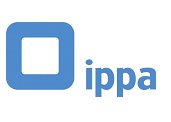params['controller'] == 'toolboxes' AND $this->params['action']=='details')) : ?>
'.$this -> html -> link($text, '/files/pages/' . $file['filename'], array('target' => '_blank')); } }*/ ?>
The Tools, Methods or Processes can be described in terms of their properties or the Objectives they support:
Instrumental: Concerned with enhancing the quality of decision-making, finding acceptable outcomes and the integration of these into a legitimate process.
- Use of the tool assists in production of acceptable/tolerable outcomes
- There is a clear definition of the issue
- The results feed into or can be incorporated in a legitimate process
- The tool enhances the quality of decision-making
Procedural: Concerned with the conduct of the process, for example whether it provides conditions that assure equal rights for all participants.
- Transparency
- Legitimacy
- The presence of a deliberative environment
- There is equality of access
- There is the ability and freedom to speak (stakeholders are not bound by disciplining nature of the event, the process does not dictate roles)
- Inclusiveness (the tool allows inclusion of all relevant/appropriate entities, capture of inappropriate interest groups is avoided/ representative of different views and groups of stakeholder)
Constitutive: Refers to the benefits implied by participation, such as for example the development of understanding and capacity building.
- The tool assists in the improvement of trust and understanding between participants/reduction of conflicts
- There is development a sense of shared responsibility and common good
- The tool assists in capacity building/ learning
Html -> image('processing.gif', array('border' => '0')); ?>

